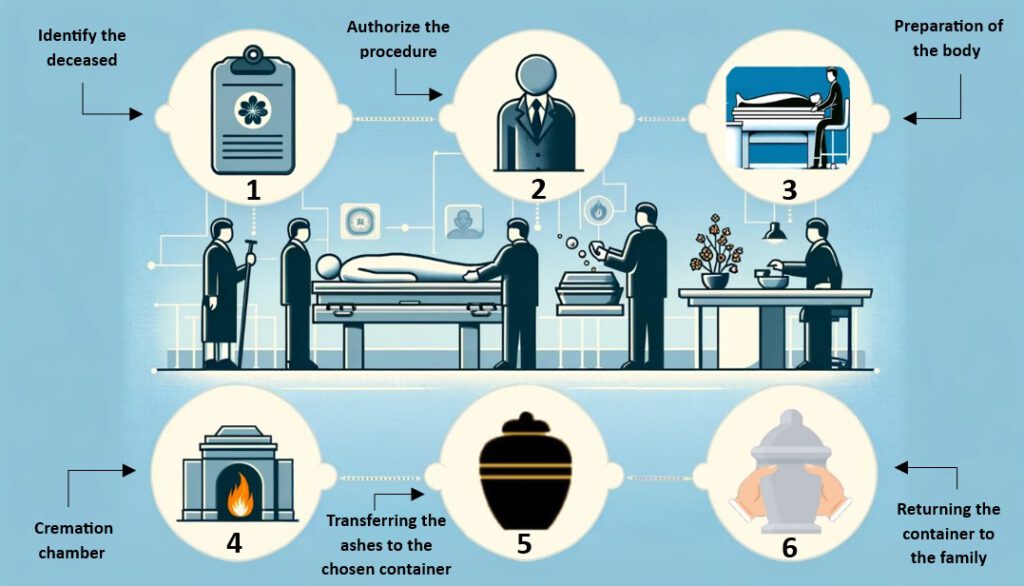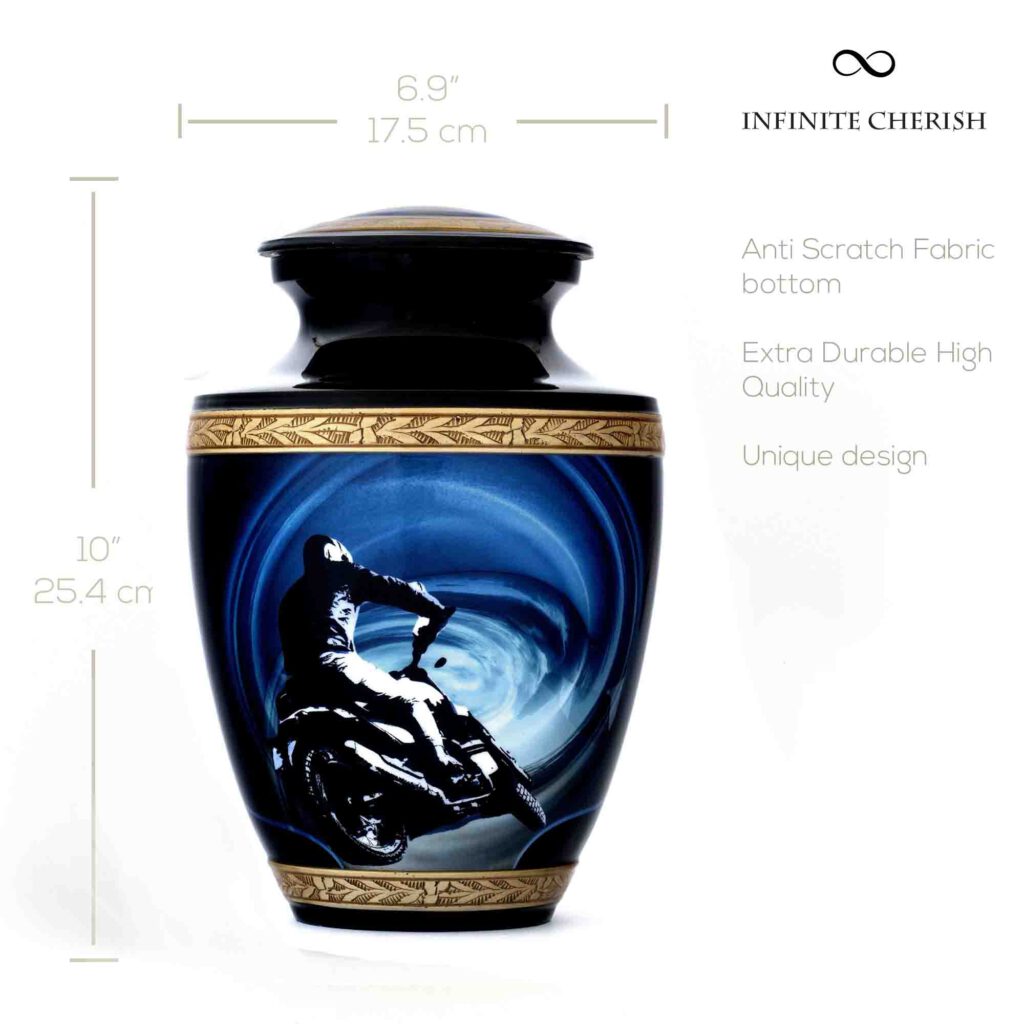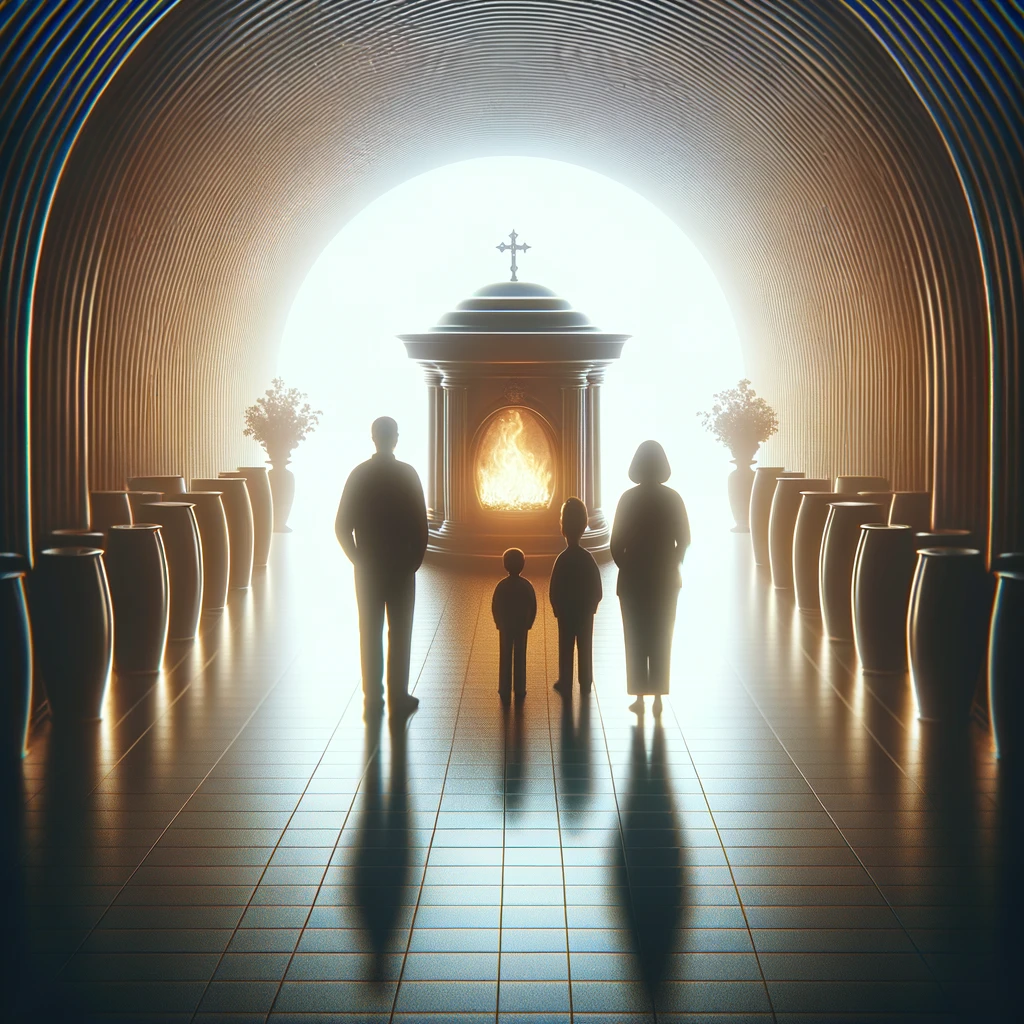How Does Cremation Work
Cremation is a method of final disposition gaining popularity for its practicality and diverse options for memorialization. For those seeking insight into the intricacies of this process, here’s a comprehensive look at the common questions surrounding cremation.
What actually happens during cremation?
Cremation involves placing the deceased in a cremation chamber where they are subjected to intense heat and flame. This process reduces the body to bone fragments, which are then further processed into ashes.
Can items be added to the cremation chamber?
In most cases, only items that are environmentally friendly and combustible are allowed in the cremation chamber. Non-combustible items may need to be removed before the process.
What is removed from a body before cremation?
Items such as pacemakers or other potentially hazardous materials are removed before cremation. These items can pose safety risks during the process.
Do you wear clothes when you are cremated?
Yes, individuals are cremated in the clothing they were wearing at the time of the cremation unless it interferes with the process or is against specific religious or cultural practices.
How hot does a crematorium burn?
Crematoriums reach temperatures between 1,400 to 1,800 degrees Fahrenheit (760 to 982 degrees Celsius). This intense heat is crucial for the efficient and thorough cremation process.
Can you view a cremation?
While laws and regulations vary, some facilities allow family members to witness the beginning of the cremation process. It’s advisable to check with the specific crematorium for their policies on viewing.
Is embalming required before cremation?
Unlike traditional burials, embalming is not a requirement for cremation in most cases. However, it may be necessary in certain circumstances.
Can multiple individuals be cremated at once?
In some cases, multiple cremations can occur simultaneously in separate chambers within a crematorium. This practice is subject to strict regulations and ethical considerations.
How are ashes returned to the family?
Following cremation, the process of transforming remains into ashes is relatively quick. Typically, within 24 to 48 hours, the cremated remains, or ashes, are ready for collection and returned to the family in the chosen container or urn.
What is the environmental impact of cremation?
Conclusion
While cremation is generally considered more environmentally friendly than traditional burial, it still has some environmental implications. Some crematoriums offer eco-friendly options to minimize the impact.
As we demystify the cremation process, it becomes evident that this method of final disposition is not just a technicality but a canvas for personal choices and meaningful tributes.
Cremation is a journey, not just a moment, allowing individuals and families to navigate a profound experience in alignment with their beliefs. From cultural considerations to the enduring impact on the grieving process, each question unveils a facet of a process that has evolved with time.
In embracing the memories of those who have departed, the road to understanding cremation becomes a tapestry of remembrance and celebration. May this exploration guide you in making informed choices that resonate with the love and memories shared with those who touched your life.




